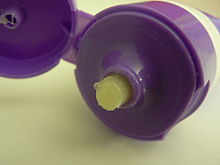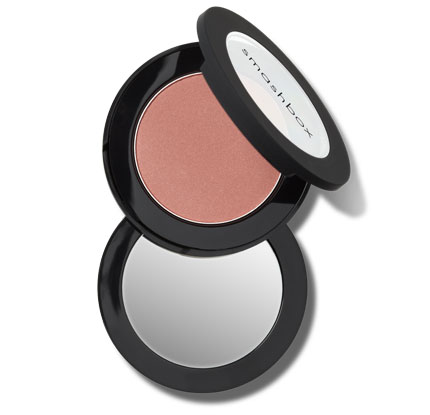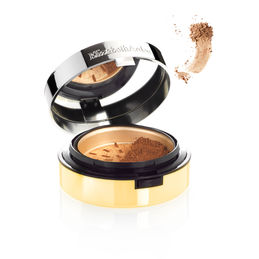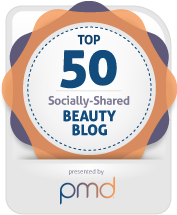Guest Blogger Amanda Green Gives You the Scoop on How to Find the Right Products that Won’t Cause You Breakouts!
Guest Blogger Amanda Green of SkincareHQ.org has brought us some useful information about how to deal with finding the right skincare products that won’t cause break-outs or if you have acne, will help make it better for you to check out.
Your Guide To Acne Causing Ingredients
It is bad enough that the skin struggles to handle its own production of sebum, a natural oil produced and excreted through our pores, that it is no wonder that adding even more chemicals and oils onto the skin can just make matters worse.
As it turns out a full 30% of people have a low tolerance to these comedogenic ingredients, causing acne and irritations even when they didn’t have acne before. Because these ingredients cause acne over a long period of time, so many do not make the connection between their products and these breakouts.
My advice:
Learn to read the labels and avoid the ingredients that are likely to cause breakouts, skin irritations and ultimately even scarring.
What are the ingredients that create pimples?
Lanolins
Lanolin is top of the list of comedogenic active ingredients since this is probably one of the most popular components in cosmetic products. Lanolin is actually just sheep oil that comes from the wool.
But it is not the actual lanolin being used in cosmetics that is harmful, it is the lanolin derivatives, in other words, synthetic lanolins which are primarily designed to mimic the body’s own sebum. As it turns out, these synthetic forms of lanolin actually penetrate the skin better than the real thing and it is these products which cause irritations and acne in those susceptible. Examples are etoxylated and acetylated lanolins.
Isopropyl Myristate and its relatives
This is the ingredient which is responsible for smooth application, a property that so many products claim to have. Incidentally it is also the main ingredient in a can of rust remover. Would you put this on your skin? Well, apparently many of us do without really noticing.
Specific ingredients to watch out for are:
• Anything with the word isopropyl in it
• PPG myristyl propionate
• Myristyl myristate
• Decyl oleate
• Octyl sterate
• Octyl palmitate
• Laureth 4
D & C Pigments (Drug & Cosmetic)
Some of the reddish dyes used in blushes are actually comedogenic (pimple causing), which should not come as too much of a surprise considering they are by-products of coal tar. Interestingly enough chimney sweeps were known for having acne breakouts. Carmine is a common substitute and is used by Smashbox and Benefit in their blushes and eye shadows.
Check out our list of products that pass the test
Foundations
• Almay Clean Complexion
• Elizabeth Arden’s Oil Free Make-up: Pure Finish Mineral Powder Foundation
• Lancome Teint Idole Ultra 24H Foundation
Other cosmetics
• Products containing alboline Lotion such as Maybeline Moisture Whip Lipstick
• Shepard’ s Cream Lotion for Dry Skin
These are just some examples of cosmetics that are ok to use on skin that is acne prone. Some of these products do have minute quantities of those bothersome active ingredients in safe proportions.
Mixing cosmetics and moisturizers
Just because you have found the perfect non irritating moisturizer does not mean that all products in the same line will be right for your skin. For example the moisturizer can contain lanolin while the rest of the line is completely non-comedogenic.
Don’t overlook acne treatments
The assumption is that acne treatments are safe to use on acne. There are some products for example Retin-A Cream, Hytone, and Xerac, all of which are known to contain pore blocking ingredients. Anyone with acne should check the labels of every single product even those designed to treat problem skin.
The best ingredient to be on the lookout for in acne treatments is benzoyl peroxide (BP), which is completely non comedogenic. For example, Vivant’s BP comes in a 5% and 10% formula depending on the severity of the acne.
Summary:
Avoid cosmetics and even treatments that contain ingredients that can cause irritation.
Meticulously check all labels of all products, being careful not to overlook even eye shadows and blush.
Manufacturers are known for mixing up the ingredients in different batches, so the trick is to keep at it even if you know the product well.
Images complement of
Elizabetharden.com
Clinique.com
wikipedia.org
smashbox.com
Author bio: Amanda is a makeup and skin care junkie and proud author of up-and-coming SkincareHQ.org where she shares her thoughts and ideas on everything beauty. When Amanda isn’t writing about makeup and skincare, she enjoys time away with the family. Questions or comments for Amanda? Feel free to connect with her @Skincare_HQ on Twitter!
Thanks to Amanda Green for this really in-depth piece on these products. Do contact her for questions and tips!!
Stevie Wilson,
LA-Story.com
FREE Standard Shipping on ALL Orders Over $49 at L’Occitane!
Subscribe to RSS headline updates from:
Powered by FeedBurner
If you are going to feature content from LA-Story.com including podcasts or videos including the accompanying text, please respect copyright provisions. We require a notation of content origination (meaning credit tag), a linkback to the specific page & please email the link to [email protected] before the piece goes live.
LA-Story.com, LA-Story Recessionista, Celebrity Stylescope, Celebrity Style Slam Trademark/Copyright: KBP Inc./TNBT Inc 2007-13














